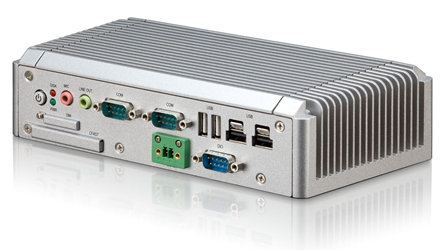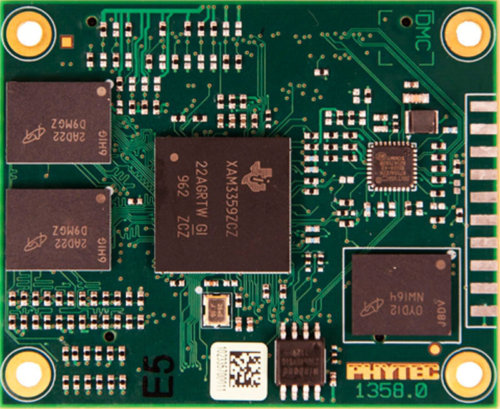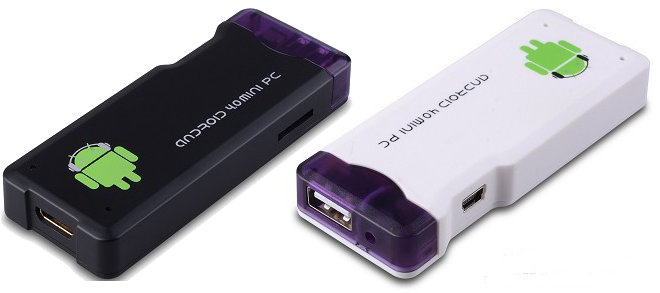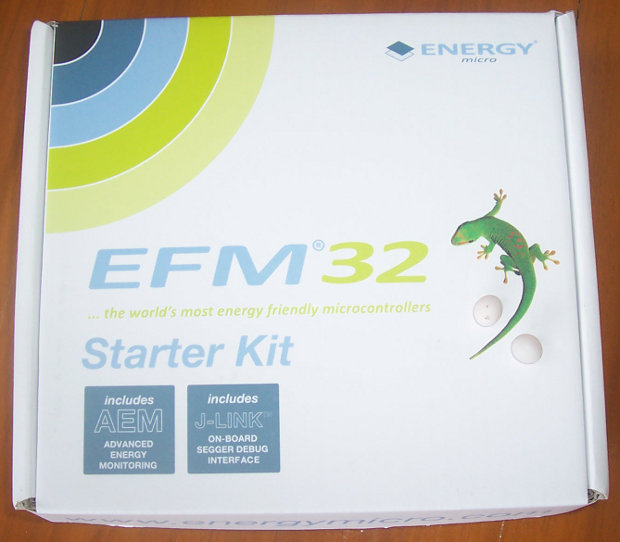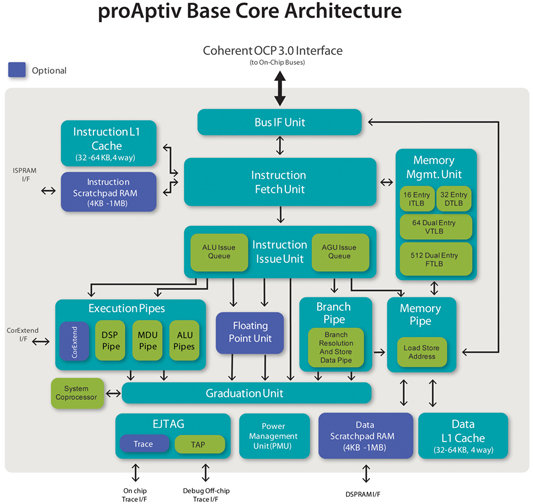The Raspberry Pi foundation is working on a camera module for the Raspberry Pi board and today they showed the very first picture taken with the “PiCam” module. The picture below has been taken with a camera module connected via the MIPI CSI-2 interface of the Raspberry Pi. On another subject, if you look closely at the top left of the picture, you can see the Raspberry Pi foundation (and probably Broadcom) uses Synopsys MetaWare Debugger (and Compiler?) to work on the software and fix bugs. Maybe more on that later… The camera module used supports up to 14 Mpixel resolution, but the final module will most probably have a 5MP resolution in order to make it cheaper. The mechanical design is not complete and the foundation does not have a price for the camera module yet. You can see what the 14MP camera module looks like (it’s basically a […]
Getting Ubuntu armel/armhf Rootfs in Ubuntu 12.04
I’ve recently upgraded to Ubuntu 12.04 and this is a great operating system. However, if you do some arm development and expect to be able to install cross libraries (armel/armhf) or easily generate an arm rootfs using the tools you’ve been used to, you’ll be disappointed. In Ubuntu 11.10 (Oneiric), I used xapt and dpkg-cross to retrieve armel libraries, but it’s broken for Ubuntu 12.04, at least on my system. I’ve been told to switch to multiarch because this will be how it’s done from now on. But I soon discovered this is work in progress as quite a few packages are not multiarched yet including python. Ubuntu developers also decided to remove rootstock (which makes sense since xapt/dpkg-cross will be deprecated), so if you want to generate a rootfs the “gool ol’” way (which won’t be supported much longer), you’d have to install an Oneric chroot to run rootstock, […]
VIA Technologies Announces VIA AMOS-3002 System For Embedded Applications
VIA Technologies has just unveiled the VIA AMOS-3002, a fanless system based on VIA EPIA-P900 Pico-ITX board, targeting embedded applications such as telematics, in-vehicle control, machine to machine controller (M2M), digital signage and kiosks. The VIA EPIA-P900 Pico-ITX board is powered by VIA Eden X2 dual core processor (1GHz) together with VIA VX900H media system processor (MSP) and VIA Chrome 9 video processor which render VIA AMOS-3002 systems capable of handling hardware video decoding for MPEG-2, WMV9 and H.264 codecs at 1080p resolution. Two models are available: AMOS-3002-2D10A1 and AMOS-3002-2D10A1. The latter features a 2.5” SATA hard disk drive bay which is not available in AMOS-3002-2D101A1. Here are the specifications for both VIA AMOS-3002 Models: CPU – VIA Eden X2 @ 1.0GHz Chipset – VIA VX900H Media System Processor Memory – 1x DDR3 1066 204-pin SODIMM socket (Up to 4GB) Storage: 1x CFast Flash disk socket 1 x 2.5” SATA hard […]
Phytec phyCORE-AM335x System on Module (SOM) Based on TI Sitara AM335x
PHYTEC announced the phyCORE-AM335x System on Module (SOM) powered by Texas Instruments Sitara AM335x Cortex-A8 processor clocked at 720Mhz and PowerVR SGX530 GPU. This SoM targets industrial applications and supports standards such as EtherCAT, Ethernet/IP, PROFINET, PROFIBUS, POWERLINK, SERCOS-III and CANopen. Here are phyCORE-AM335x SOM specifications: TI’s Sitara AM335x ARM Cortex-A8 processors @ 720 MHz (AM3352, AM3354, AM3356, AM3357, AM3358 and AM3359) PowerVR SGX530 Graphics (AM3359, AM3358, AM3354 only) 512 MB DDR3, 512MB/1GB NAND, 8 MB SPI Flash, 32 KB EEPROM 6x UARTs, 3x I2C, 2x McASP, 2x SPI, 2x CAN 2x USB OTG 2x 10/100/1G Ethernet (Gigabit PHY on carrier board) 24 bpp TTL or LVDS 44 x 50 mm form factor -40 degrees to +85 degrees C temperature range Linux, Compact 7, Android The phyCORE-AM335x SOM will be available in a PHYTEC Rapid Development Kit (RDK) including: phyCore-AM335x SOM A carrier board Board support packages (BSP) Demo images […]
74 USD AllWinner A10 Android 4.0 Mini PC
A cheap white brand Android 4.0 USB/HDMI Stick based on AllWinner A10 has started to show up in Chinese websites. Initially, I thought it was like a low cost version of FXI Tech Cotton Candy (which will start shipping this month), but as you can see in the image below, the HDMI port is female so you’d still need a HDMI cable. The hole next to the USB port should be for the power supply, so this device is apparently not powered via USB (TBC). Connect a wireless mouse and keyboard to the device, the power supply, and an HDMI cable to your TV, and you’ve got yourself a cheap PC running Android 4.0. Since this is based on AllWinner A10, you could also insert a microSD card with Ubuntu, Debian or your other favorite Linux distribution and have yourself a Linux PC. Here are the specifications of the device […]
Energy Micro EFM32 Tiny Gecko (Cortex-M3) Starter Kit Unboxing
I’ve been lucky recently, after winning a TI Piccolo controlStick last month, I’ve just received Energy Micro EFM32 Starter Kit (EFM32-TG-STK3300) based on EFM32 Tiny Gecko MCU. This development board include: EFM32 Tiny Gecko Cortex-M3 MCU 8×20 LCD A light sensor A touch slider A battery compartment SEGGER J-Link mini USB port 2 Button + 1 reset button 1 User LEDs 2 expansion ports. Lots of through holes to access the different pins of the MCU Today, I’ll just show the content of the kit and next time, I’ll post more about the things I’ve done with it. Here’s the package of the EFM32 Starter Kit. The 2 gecko eggs were not included… Actually, those are house geckos eggs which are smaller than real geckos. We’ve got those here as well, but there are very shy, whereas house geckos just run around the walls and ceilings all day. Well, it’s […]
Atmel Unveils AVR XMEGA C, tinyAVR ATtiny1634 and AVR UC3 L3/D4 MCUs
Atmel announced 14 new Atmel AVR microcontrollers divided into 4 families: AVR XMEGA C, tinyAVR ATtiny1634, AVR UC3 L3 and AVR UC3 D4. Atmel AVR XMEGA C MCUs Atmel AVR XMEGA C MCUs are 8-/16-bit general-purpose MCUs with Full-Speed USB, 12-bit ADC, up to 384 KB flash and 32 KB SRAM. They can support Atmel QTouch Library for implementation of capacitive buttons, sliders and wheels functionality. The AVR XMEGA C MCUs consume 700nA in sleep mode with RTC. There 8 new XMEGA C MCUs which target consumer, industrial and home automation applications such as thermostats with display, building and climate control, utility meters with RF and ZigBee connectivity. The smallest XMEGA C MCU (ATxmega16C4), which comes in 44-pin package and has 16KB device, is the cheapest AVR XMEGA device with USB provided by Atmel. You can find further information on Atmel AVR XMEGA C page. Atmel tinyAVR ATtiny1634 MCU Atmel […]
MIPS Introduces microAptiv, interAptiv and proAptiv Cores
MIPS Technologies has introduced their new Aptiv generation of microprocessor cores divided into 3 families: proAptiv, interAptiv and microAptiv. proAptiv Core (equivalent to ARM Cortex A15 DMIPS/Mhz) The proAptiv core achieves a 4.4 CoreMark/MHz score which according to MIPS is the best score reported for any licensable IP core. It also achieves 3.5 DMIPS/MHz which is abnout the same performance as ARM Cortex A15. This core targeted at high performance applications such as smartphones, tablets, HD STB, automotive infotainment and residential gateways. proAptiv is recommended as an upgrade to MIPS32 74K/1074K cores. interAptiv Core (equivalent to ARM Cortex-R5 DMIPS/Mhz) The multi-threaded interAptiv core delivers higher CoreMark/MHz (3.2) than competing cores in similar die area and 1.7 DMIPS/MHz per core. The interAptiv is aimed at mid-range applications such as mainstream STB, digital cameras, mid-range smartphone, broadband CPE (Consumer Premise Equipment) and SATA/SSD controllers. microAptiv Core (equivalent to ARM Cortex-M3/M4 DMIPS/Mhz) The […]




